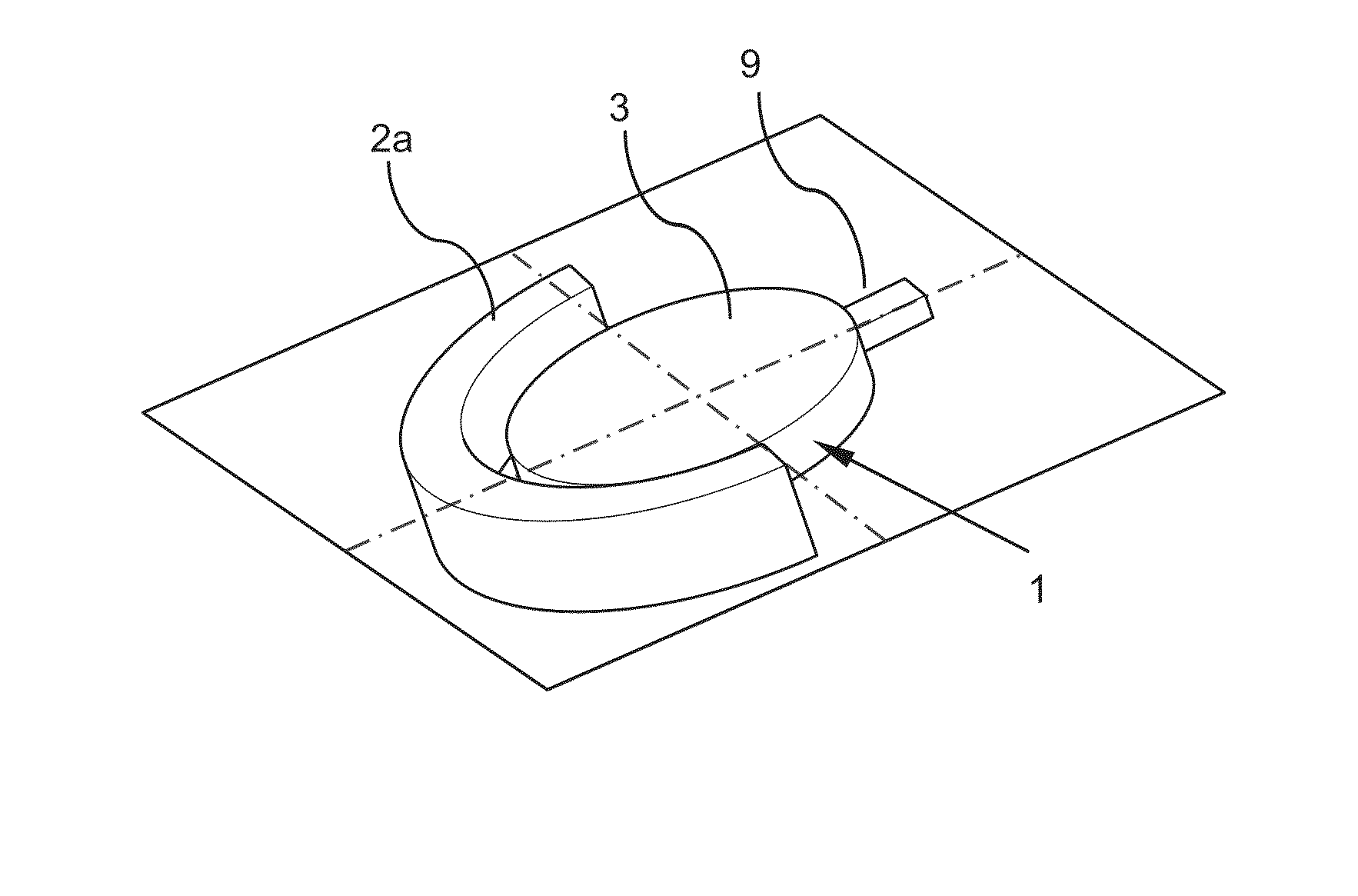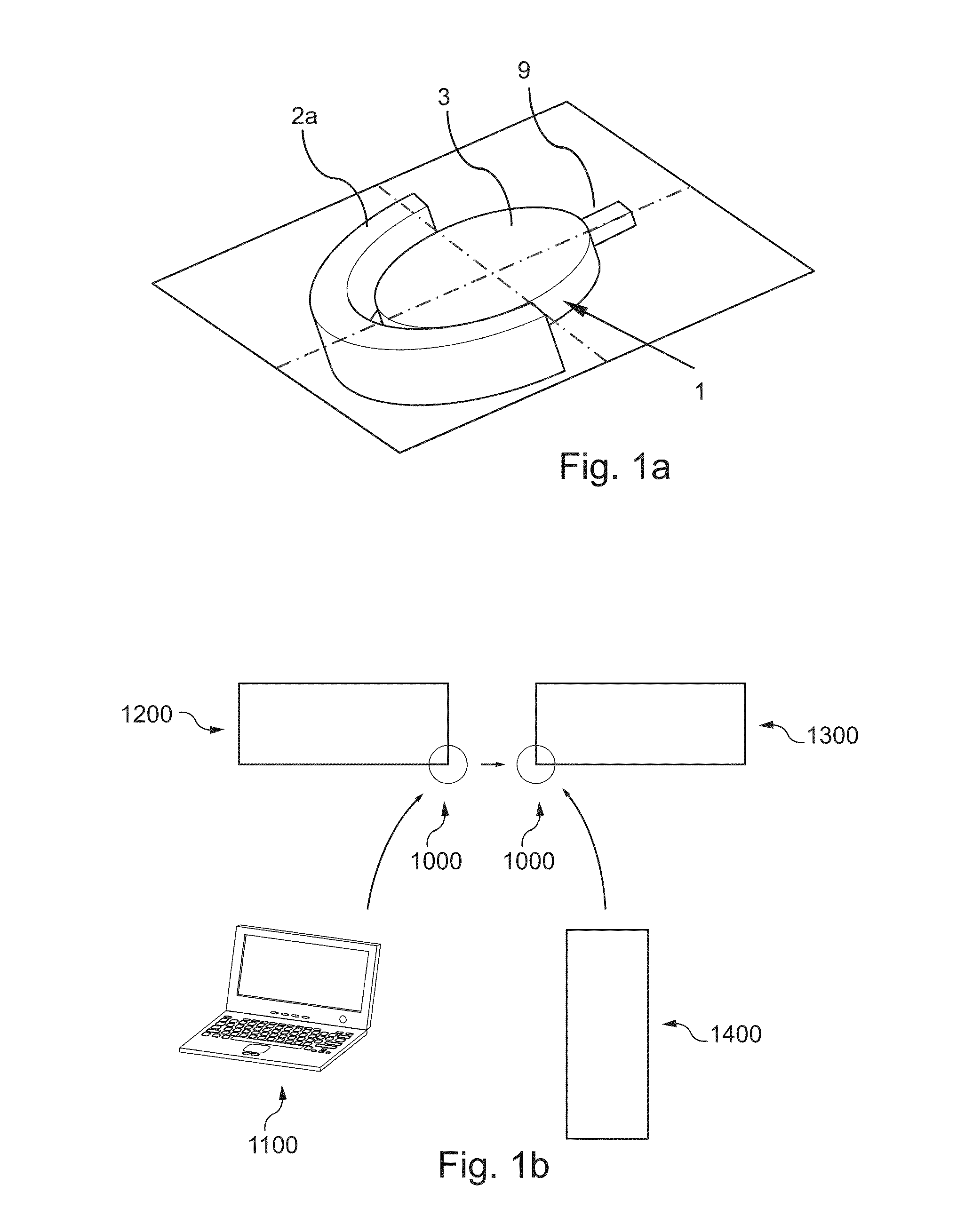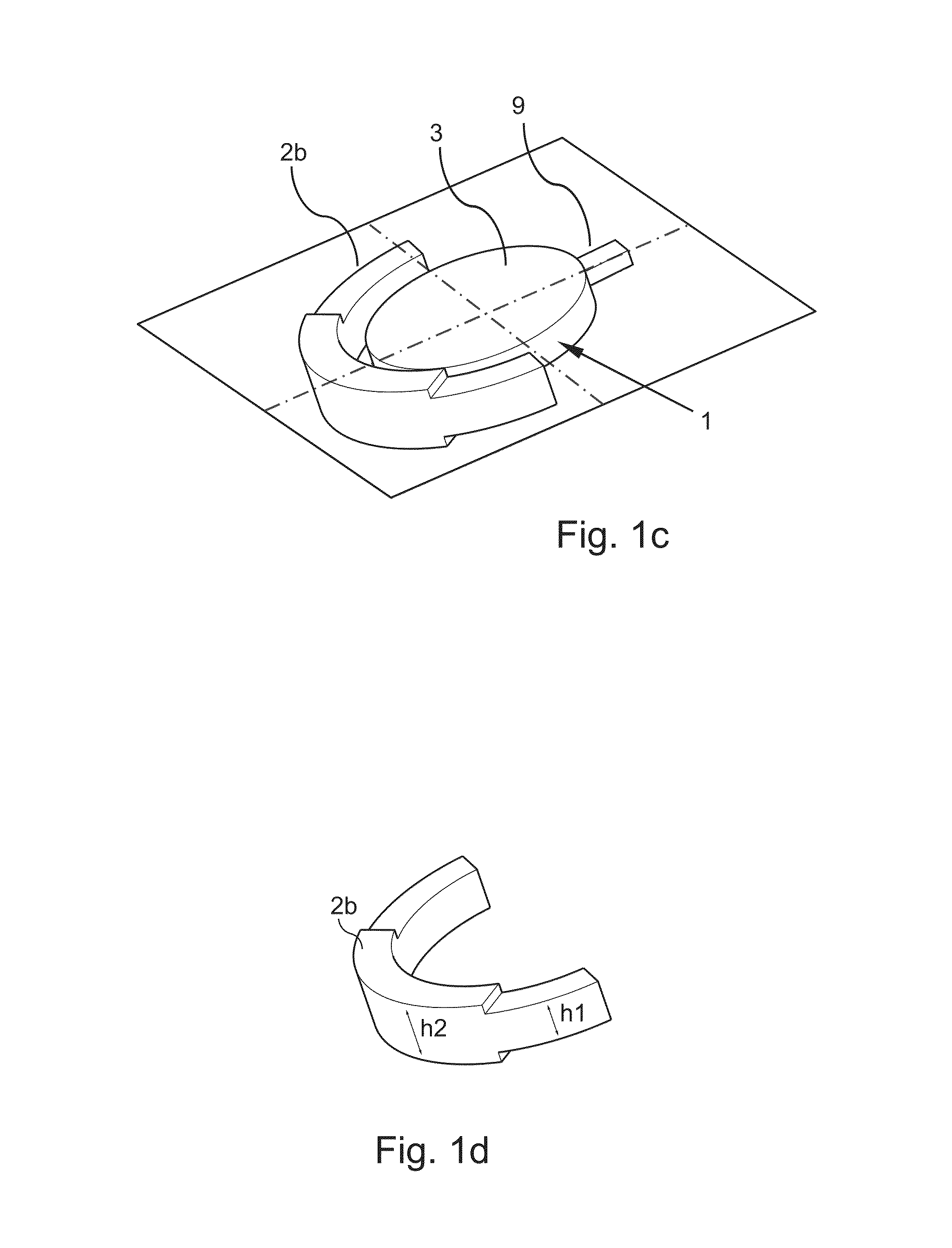Antenna system
a technology of anantenna and a lens, applied in the field of anantenna systems, can solve the problems of not being adapted to a situation, prior art solutions with spherical shapes are not adapted, etc., and achieve the effect of good focusing
- Summary
- Abstract
- Description
- Claims
- Application Information
AI Technical Summary
Benefits of technology
Problems solved by technology
Method used
Image
Examples
Embodiment Construction
[0100]FIG. 1a shows an antenna system, here used as a radiating device, designed according to the teachings of the invention.
[0101]This antenna system includes a cylindrical electromagnetic lens 1 and a superstrate 2a coupled to the cylindrical lens 1.
[0102]As it will be explained in further detail below, this cylindrical lens 1 is composed of several crows 6, 7, 8, as visible in FIG. 3a, in order to be in conformity with the Lüneburg law. This cylindrical lens is for instance implemented in the form of the electromagnetic lens 200 presented below with reference to FIG. 5a in particular.
[0103]In the embodiment shown in FIG. 1a, the cylindrical lens 1 is sandwiched between a top shield 3 and a bottom shield 4 made of a conductive material, the top shield 3 and the bottom shield thus forming a conductive mounting receiving the cylindrical lens 1.
[0104]The superstrate 2a is a ring-shaped member made of a dielectric material (e.g. Teflon®, i.e. PTFE: polytetrafluoroethylene) and partial...
PUM
 Login to View More
Login to View More Abstract
Description
Claims
Application Information
 Login to View More
Login to View More - R&D
- Intellectual Property
- Life Sciences
- Materials
- Tech Scout
- Unparalleled Data Quality
- Higher Quality Content
- 60% Fewer Hallucinations
Browse by: Latest US Patents, China's latest patents, Technical Efficacy Thesaurus, Application Domain, Technology Topic, Popular Technical Reports.
© 2025 PatSnap. All rights reserved.Legal|Privacy policy|Modern Slavery Act Transparency Statement|Sitemap|About US| Contact US: help@patsnap.com



